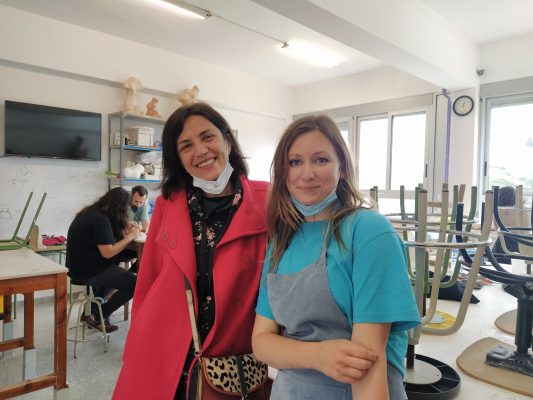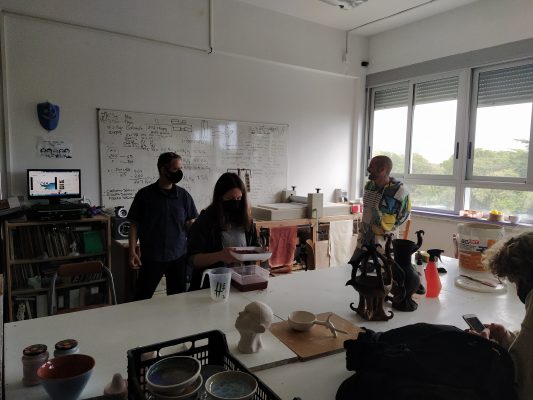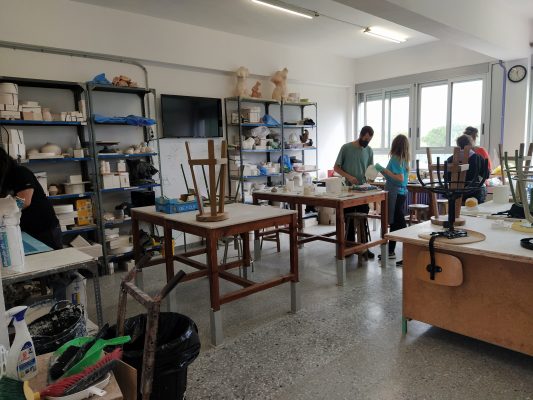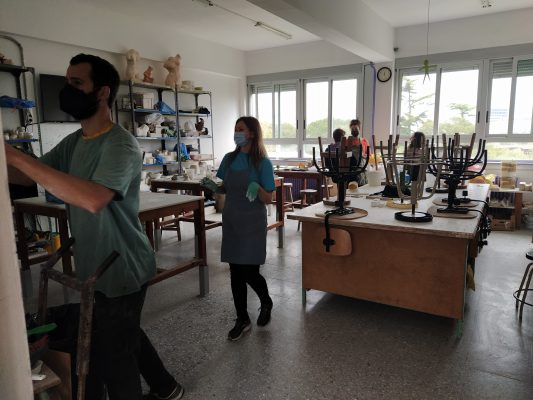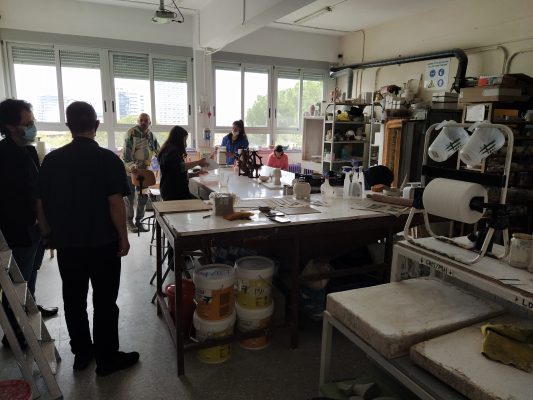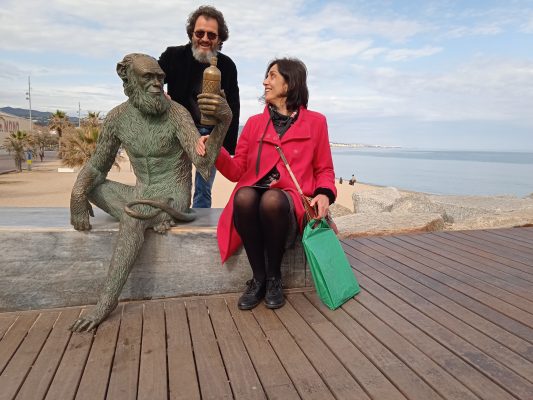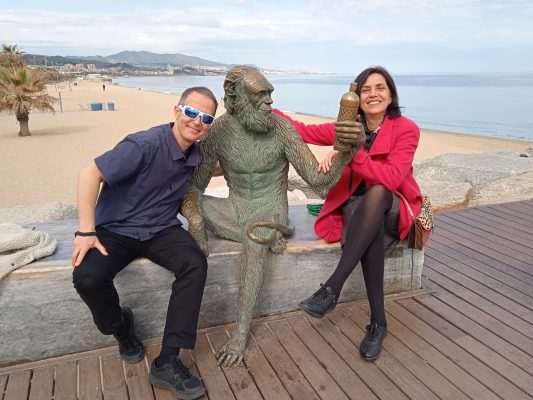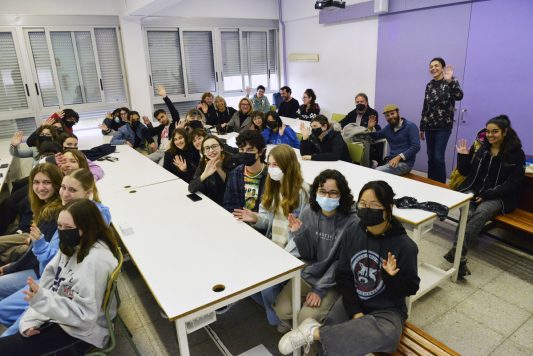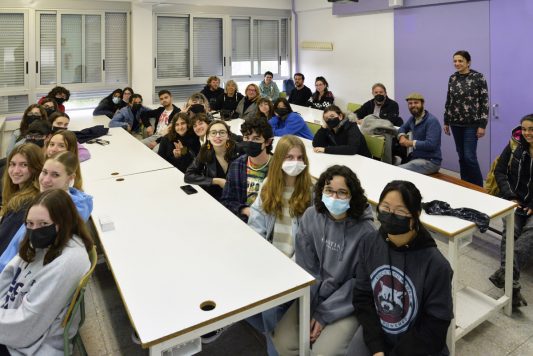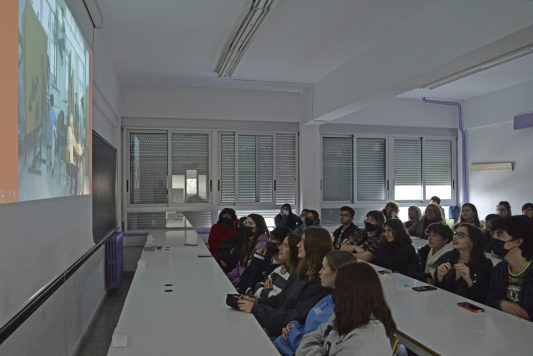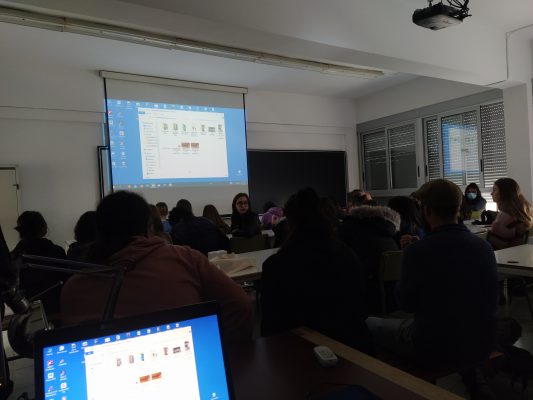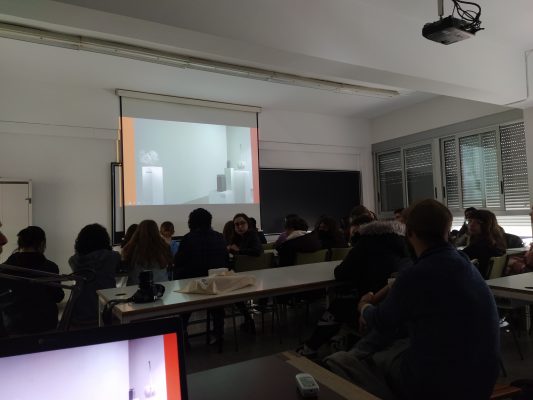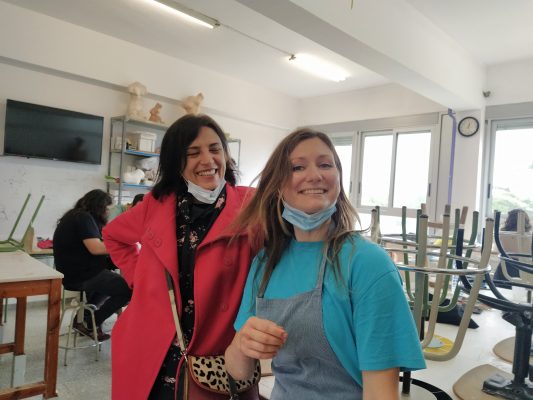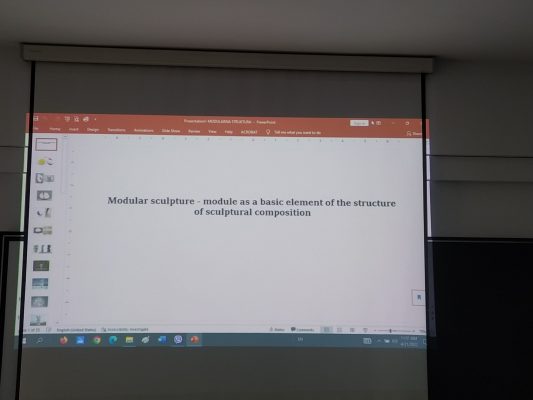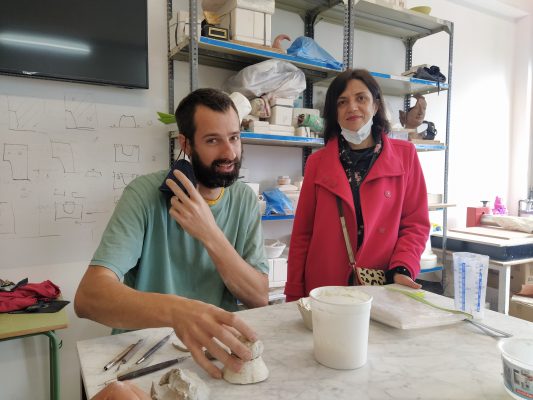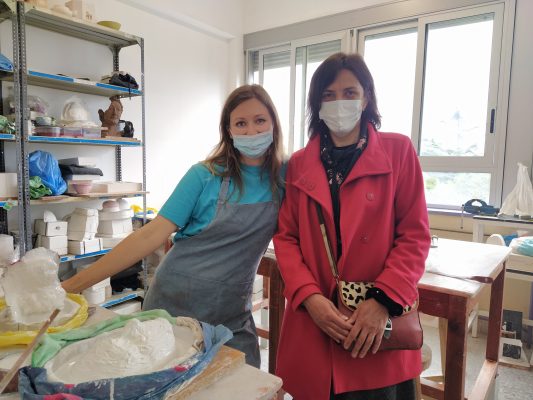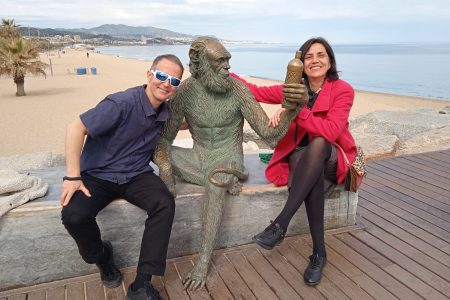
MY TEACHING MOBILITY IN BARCELONA: Julijana Protić, Faculty of Applied Arts
Julijana Protić
The University of Arts, Faculty of Applied Arts
Erasmus+ Mobility for Teaching at:
Escola D’Art Pau Gargallo, Barcelona, Spain
“Modular sculpture – module as a basic element of the structure of sculptural composition”
My visit to the Escola d’Art i Superior de Disseny Pau Gargallo de Badalona (Barcelona), Spain, from April 18th to April 22nd as part of the Erasmus+ programme, was a fantastic experience. I would like to emphasize the extraordinary hospitality and very good organization of my staying by Erasmus coordinators, Manel Clemente and Professor Carles Torné.
Firstly, it was shown to me at the School of Art Pau Gargallo de Badalona (Barcelona) and on that occasion, I met colleagues from the field of Sculpture and Ceramics and we discussed the plans and methodological of sculpture studies, similarities and differences at both faculties – Faculty of Applied Arts in Belgrade and Pau Gargallo de Badalona (Barcelona). I also met students in these two fields, I saw their artworks and we talked about different techniques in sculpture, in general.
I presented my faculty and the Department of applied sculpture and my artworks. A lively discussion was developed. The students were curious, very communicative and interested in everything. A great number of different questions were asked by students as well as professors. I Introduced students to the subject and the aim of the lecture and workshop and gave a theoretical lecture about the phenomenon of the module through the illustrations from biology and physic. After that, I gave a lecture about modular structures in visual art, especially in sculpture, about five different concepts and procedures of the process of creating modular sculptures and the realisation of a sculptural work through research into the phenomena and principles of modularity and collage-assemblage procedure within the space of sculpture. All of that was fully richly illustrated with examples.
Furthermore, students were encouraged to explore the complexity of the sculptural composition and some of the principles of structural assemblage and principles that connect the sculptural solution into an organic spatial entirety during the working process on the sculptures – how is the interdependence of the particular modules explored through physical interaction and manipulation with shape and surface; how the module can be defined geometrically, biomorph or abstract and he can be performed in any material and, finally, how the possibility of the process of transforming (modular) construction or structure to another, to a three-dimensional shape or relief composition also can cause the change of paradigm.
The lectures were attended by 30 students both from the Department of Sculpture and the Department of Art Ceramics and three professors.
During my stay, I was able to feel the kindness of the people, and enjoy the beautiful natural surroundings and the most famous landmarks of Barcelona.
The positive takeaway, for me, is this trip also emphasized the importance of sharing cultural experiences through the possibility of cooperation with students from different cultural areas and the experiences exchanging in the teaching process and organizing classes at faculties through direct contact. This was an opportunity to be introduced to the different strategies of the teaching process and to develop my teaching skills.
In the field of art practice, it was an experience exchange about sculptural practice and different approaches to phenomena of form and space as well as the exchange of ideas, reflective, ethical and emotional experiences between colleagues.
